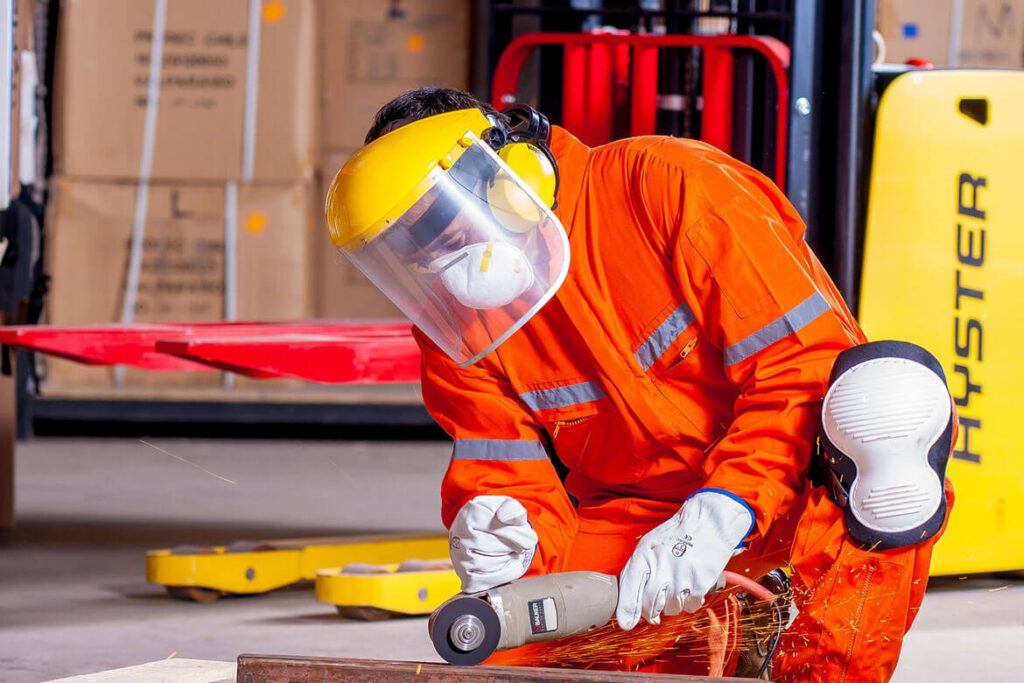Introduction
The aim of this toolbox talk is to increase staff awareness of the importance of wearing personal protective equipment that is suitable for the task or work activity being carried out.
The use of regular toolbox talks, if done effectively, will significantly improve the safety culture within your organisation. This will increase the safety awareness of the workers, and as a result reduce the likelihood of accidents and unsafe occurrences.
Legislation references
- Health & Safety at Work Act 1974
- The Personal Protective Equipment at Work Regulations 1992
Task specific PPE awareness
Adequate protective clothing is a pre-requisite of safety at any workplace. Wearing the correct PPE provides effective protection against hazards associated with your work. PPE’s main purpose is to create a physical barrier between a person at work and any workplace hazards. However, PPE is your last form of protection from hazards.
Where there are additional hazards associated with your work, you must wear task specific PPE. This may include:
- Gloves (i.e. when working with sharp edges
- Safety glasses (i.e. when drilling or cutting metal)
- Hearing protection (i.e. when working in near loud operations)
Where additional or task specific PPE is required, you must wear it – for your own safety.
HSE notes on PPE (INDG174)
A document (INDG174) from the health and safety executive (HSE) stipulates specific requirements for task specific PPE.
Eyes
Make sure the eye protection has the right combination of impact / dust / splash / molten metal eye protection for the task and fits the user properly.
Head
Don’t forget neck protection, e.g. scarves for use during welding. Do not use head protection if it is damaged – replace it.
Breathing
The right type of respirator filter must be used as each is effective for only a limited range of substances.
Protecting the body
High visibility clothing is critical for your safety on site. Clothing materials must be suitable for the task, such as flame retardant or oil resistant etc. Don’t forget other protection, like safety harnesses.
Hands and arms
Avoid gloves when operating machines such as bench drills where the gloves could get caught. Some materials are quickly penetrated by chemicals so be careful when you are selecting them.
Barrier creams are unreliable and are no substitute for proper PPE. Wearing gloves for long periods can make the skin hot and sweaty, leading to skin problems; using separate cotton inner gloves can help prevent this. Be aware that some people may be allergic to materials used in gloves, e.g. latex.
Feet and legs
Footwear can have a variety of sole patterns and materials to help prevent slips in different conditions, including oil or chemical-resistant soles. It can also be anti-static, electrically conductive or thermally insulating. It is important that the appropriate footwear is selected for the risks identified.

